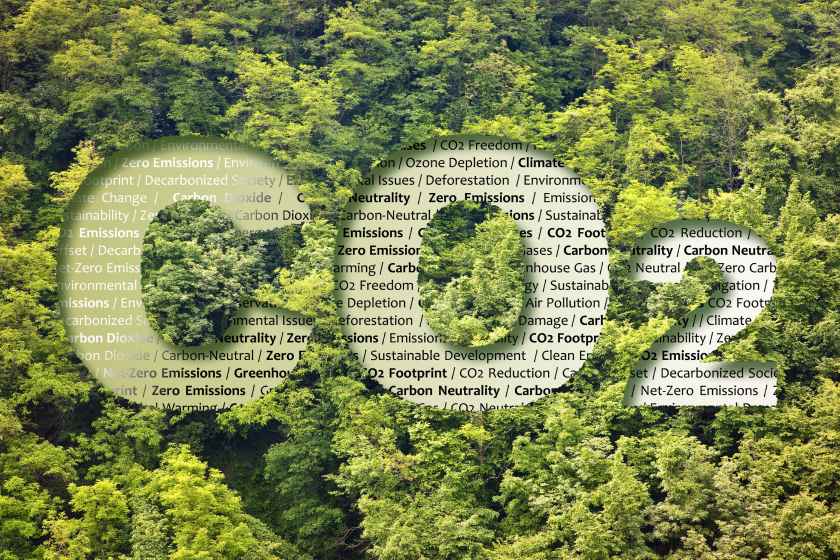HMRC’s Octagon Green investigation: One key takeaway
It’s one thing for a company to face an HMRC investigation for tax evasion – and another to face such an...
READ MORE
The overarching message to those considering a move towards Net Zero is to act now. Following this advice means businesses have less chance of being impacted by future costs and legislative issues, while increasing their likelihood of reaching Net Zero by 2030. Businesses can start saving money and carbon immediately if they take the initial steps now.

New legislation will require businesses to make these changes regardless of how long they wish to wait. Therefore, getting a head start is more beneficial than in five years time, when more money has been wasted and more carbon has entered the atmosphere.
Four themes can be addressed when attempting to reach Net Zero targets: measure, manage, mitigate, and minimise. These items allow businesses to reduce their carbon output in effective and efficient ways, meaning they not only start their journey to Net Zero, but save themselves money through doing so. The key themes to carbon reduction can be broken down to measuring your current emissions, managing your approach to energy, mitigating your long-term risks (in terms of policy), and minimising your cost and carbon output.
The first concrete step on the journey towards Net Zero is to measure current emissions and collect data on Scopes 1 and 2. Without an awareness of your current baseline, it is impossible to consider approaches to reduce it. Knowing your starting point can give a more accurate prediction of where you’d like to end up, and an appreciation for the level of effort required. This is where data can form a visual of your business-as-usual output and set an initial figure to measure yourself against. Once established, it is easier to set target reduction areas and, therefore, put in place long-term goals.
Once the foundations have been put in place, implementing steps to facilitate carbon reduction can follow. Management is another key theme for carbon reduction and can take place during short (within a year), medium (2 to 3 years), and long term (3 to 8 years) parameters and cost points.
LED lighting, automation, and insulation are great starting points when considering solutions that are short term, relatively low-cost, and quick wins. These are straightforward, easily implemented strategies for businesses, meaning they can see changes in their carbon output sooner and allows them to work on their longer-term goals alongside this. Many of the changes that would take place in a Net Zero plan not only reduce greenhouse gases, but also costs, due to increasing efficiency; with energy costs rising rapidly, any reductions in waste provide attractive benefits.
Therefore, companies implementing these changes can make smart business decisions and smart environmental decisions simultaneously.
Installing on-site renewable generation, such as rooftop solar, or controlling a site through a Building Management System (BMS) are typically considered medium-term solutions as they require more time and effort from businesses. These approaches may require additional investment; however, some providers can secure third party funding.
Firstly, on-site generation allows buildings to produce their own power at the point of use and means businesses can cut out the middleman. A BMS allows a user to adjust their heating, cooling, and lighting, as well as other functions from one central console. Users can then quantify their energy usage and therefore reclaim control over how it is regulated and reduced. Both of these options are a stepping stone from short-term solutions and encourage the user to take back control over their power production and usage.
An example of a longer-term solution includes Power Purchase Agreements (PPAs). This is where an energy consumer commits to purchasing their electricity from a single renewable generator. These types of solutions require high stakeholder buy-in, sometimes complex project management, and potentially multiple sub-contractors. PPAs allow the user to source renewable energy from external sources and are usually signed for 10 to 20 years.
In some circumstances, PPAs can be considered for shorter periods such as between 5 to 10 years. Typically, a contractual agreement between an energy generator and a consumer is created, but they often involve an energy supplier, also. These agreements allow companies to pay a fixed price for energy generated by a renewable asset over the specified time. They provide energy security for companies using high amounts of energy, reducing their exposure to volatile markets while maintaining their carbon reduction. They normally provide certificated proof of generation from a single source giving greater transparency for sustainability reporting.
Ultimately, there are many approaches to starting the journey to Net Zero, whether that be over a long or short-time scale. However, any business contemplating the initial steps in moving towards Net Zero, regardless of what they may be, should take the initiative to act sooner rather than later.